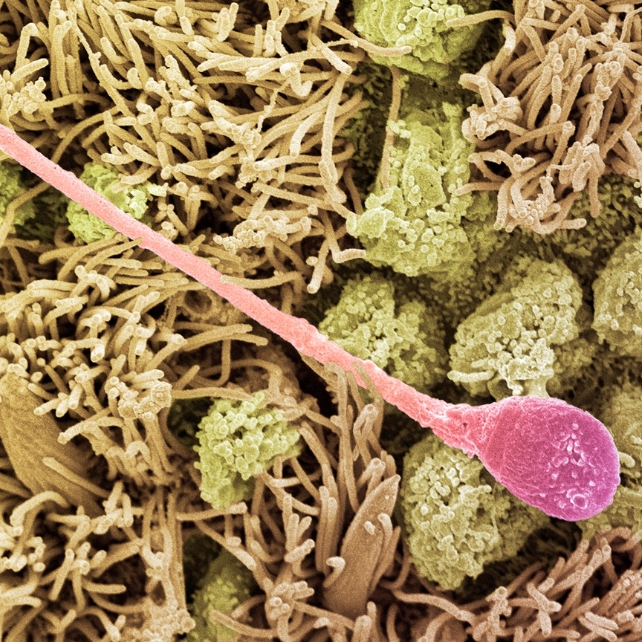Human sperm have long been a subject of fascination—not just for their role in fertilization, but for their remarkable ability to navigate through some of the most viscous environments in the body. But a recent study published in PRX Life has raised a surprising question: do sperm really follow the laws of physics? The answer, it turns out, is more complex than anyone could have imagined.
The Mystery of Swimming in Viscous Fluids
When we think of swimming, we imagine movement through water, a relatively thin fluid that allows us to glide with minimal resistance. Now, picture a sperm cell swimming through a thick, viscous liquid, like honey. Normally, such an environment would sap the swimmer’s energy, effectively halting movement. But sperm seem to do the impossible—they glide effortlessly through these dense fluids, seemingly unaffected by the physics that would otherwise slow them down.
To understand why, a team of researchers led by Kenta Ishimoto at Kyoto University took a closer look at the mechanics behind this unusual swimming behavior. Their findings challenge a centuries-old principle in physics—the well-known Newton’s Third Law of Motion.


Breaking Newton’s Third Law
Newton’s third law states that “for every action, there is an equal and opposite reaction.” It’s one of the cornerstones of classical mechanics, governing everything from the way planets orbit to the way you push against a wall. In the case of swimming organisms, like sperm, this law suggests that for every movement they make, the surrounding fluid should push back with an equal and opposite force. This is what typically slows down any swimmer in a dense fluid.
However, sperm seem to defy this principle. Instead of experiencing the expected opposition, the flexible flagella of the sperm (the tail) bend and move in a non-reciprocal manner, generating propulsion without the typical equal and opposite reaction from the fluid. The flagellum interacts with the liquid in ways that bypass the expected forces, allowing it to move forward with minimal energy loss.
The Role of Odd Elasticity
The key to this paradox lies in a property called odd elasticity. This concept was proposed by Ishimoto’s team to explain how sperm and other microscopic swimmers, such as Chlamydomonas algae, manage to navigate through viscous environments without losing much energy. In simple terms, odd elasticity describes how the tail (or flagellum) bends in a specific way that doesn’t provoke the usual reaction from the surrounding fluid.
To illustrate, imagine that a swimmer’s tail moves through the fluid by creating waves. These waves are asymmetrical—meaning the fluid doesn’t push back in the typical equal-and-opposite manner. This allows the swimmer to glide through the liquid without much resistance, even in thicker environments where other objects would quickly come to a stop.


Why It Matters Beyond Sperm
Understanding this mechanism of odd elasticity has implications far beyond sperm cells. For one, it could provide valuable insights into the design of small robots and machines that mimic biological systems. By studying how sperm and algae bypass the traditional laws of physics, scientists could develop more efficient self-propelled robots that operate in viscous environments—potentially changing industries like medicine, environmental monitoring, and even space exploration.
Furthermore, the research opens the door for a broader understanding of collective behavior in nature. Just as sperm cells and algae defy Newton’s third law in microscopic ways, there could be larger systems—such as crowds or flocks of animals—that operate under principles we have yet to fully grasp. By exploring these interactions in more detail, we may uncover new ways to understand how forces operate in living systems.
Source link


